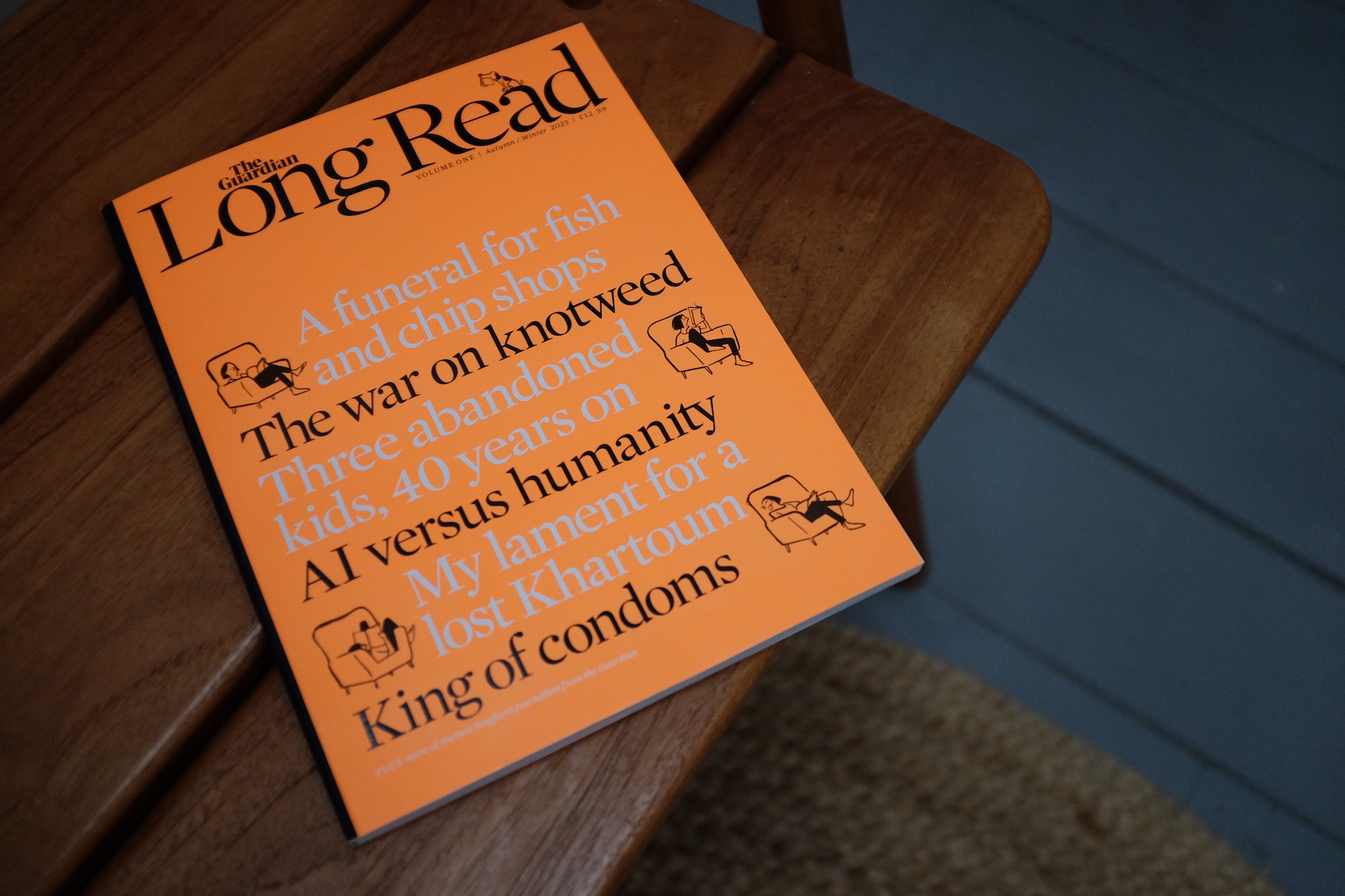
Hang around long enough in this business and you start to see the same ideas come back a second — or third, or seventeenth — time. That’s not a bad thing, really: There are only so many new ideas, and sharpening an old knife will sometimes make a better blade than forging a new one from scratch. You just have to hope the execution’s better the next time round.
On Saturday, British newspaper The Guardian unveiled a brand new product: The Guardian Long Read Magazine. “The Long Read” is the paper’s all-encompassing brand for its longform stories, and it’s proven flexible; for instance, podcast fans can listen to The Audio Long Read.1
Now they’re packaging some of their best long stories from the past few months into a nicely bound “bookazine”2 that’s for sale at select British newsstands, bookshops, and online.
Beautifully bound, this exclusive 100-page special magazine showcases the Guardian’s best longform journalism, with immersive stories on everything from politics to philosophy, food and crime. In this edition, you’ll find pieces about humanity’s war on Japanese knotweed, the disappearance of fish and chips shops across Britain, and Durex’s long quest to make condoms sexy.The Guardian Long Read magazine features writing by Giles Tremlett, Sophie Elmhirst, Samanth Subramanian, Nesrine Malik, Ben Tarnoff, Dina Nayeri, Carey Baraka, Melissa Denes, Alex Blasdel and Tom Lamont.
It’s Nice That has a nice story that gets into the design of the new magazine:
According to the creatives at the helm, ECD Chris Clarke and art director Bruno Haward, it’s a format that The Guardian has received many requests for over the years.“We know that for many people, myself included, when it comes to long, immersive pieces, reading in print — without the distraction of your phone, or emails and notifications pinging in — is still the most satisfying reading experience, and one that should be cherished in a climate so saturated by disturbance,” says Chris. With most of these more evergreen stories taking months or even years to build, hardy print felt the best way for them to live.
Chris likes to think of The Long Read Magazine like a ‘bookazine’; it balances all the things we love about magazines (“the drama, the pace, the energy”) with the considered typesetting of a book. A lot of attention was given to packaging its large volume of text — clocking in at 55,000 words — to make the reading experience as relaxing as possible, from body type size to column widths.
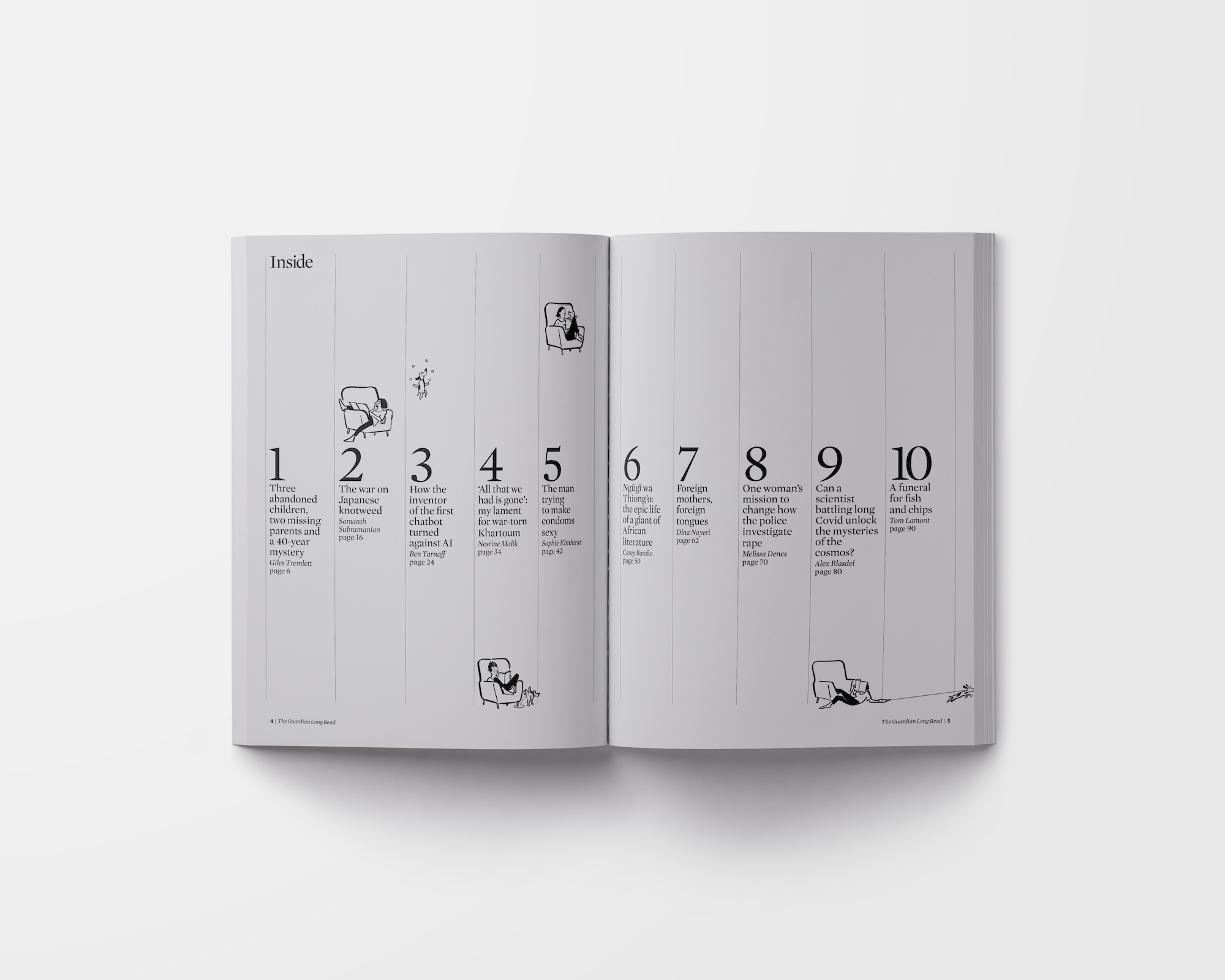
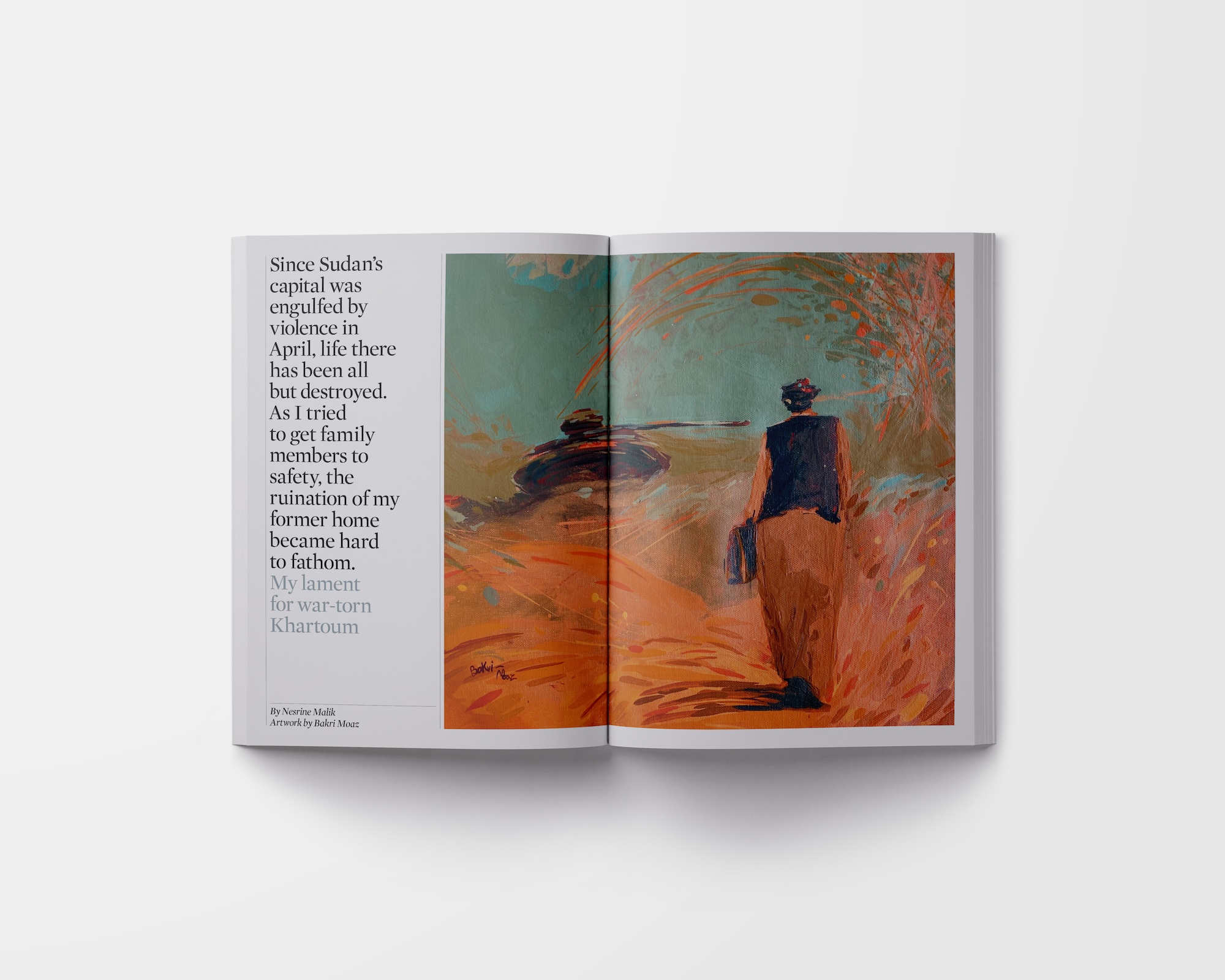
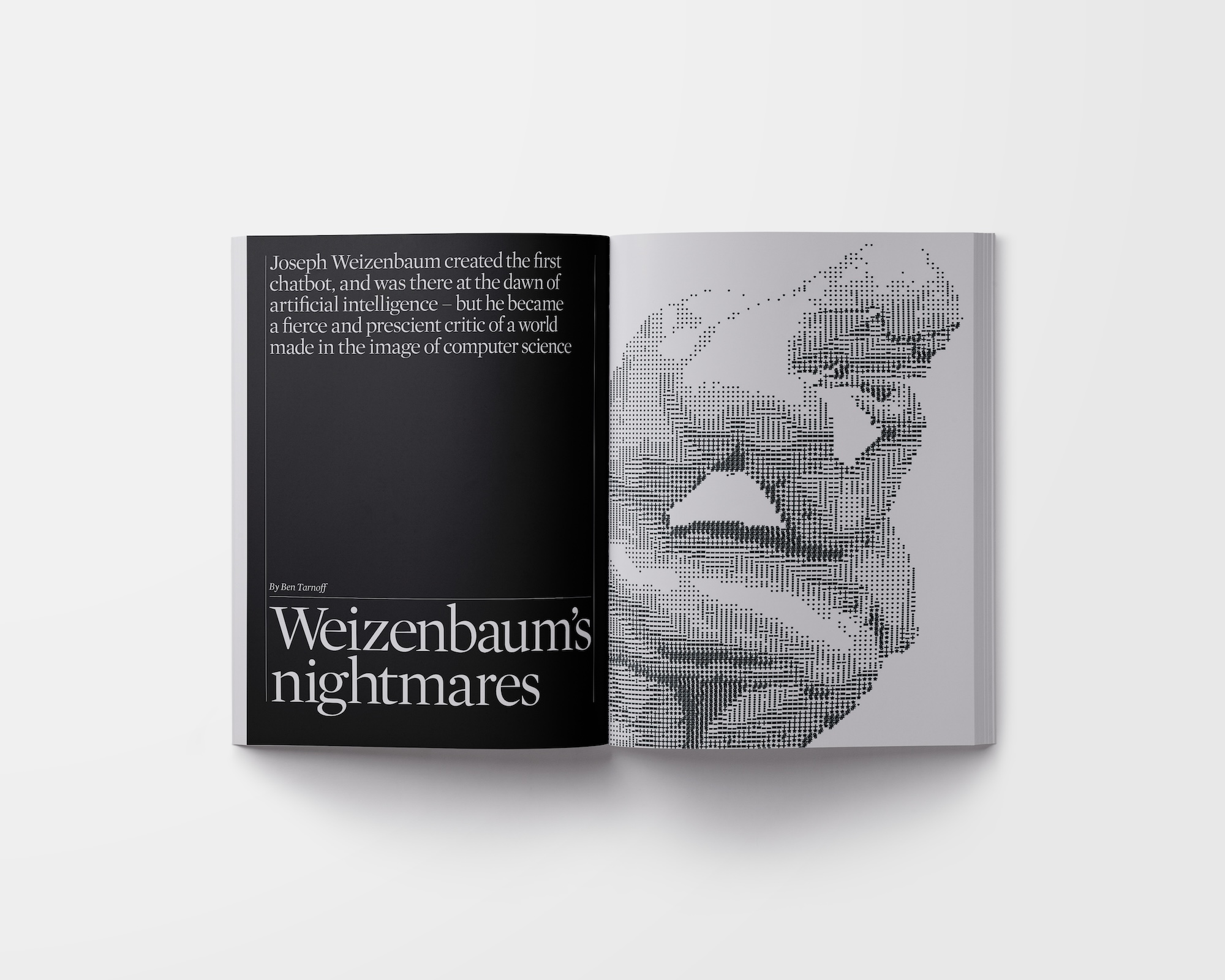
It looks lovely, and I hope they sell a lot of them. (The company tells me the initial print run is 6,000 copies. The cover price is £12.99, or about $16.)
That said, as soon as I saw this story, my mind immediately went back almost exactly one decade — to a different attempt by The Guardian to put its Long Read franchise into print. 2013 and 2023 are quite different times for the media business, and the differences between the two iterations are instructive. Here’s former Nieman Lab staff writer Justin Ellis (now projects editor at Defector):The Guardian is experimenting in the craft newspaper business and getting some help from robots.That may sound odd, given that the company prints a daily paper read throughout Britain. A paper staffed by humans. But the company is tinkering with something smaller and more algorithm-driven.
The Guardian has partnered with The Newspaper Club, a company that produces small-run DIY newspapers, to print The Long Good Read, a weekly print product that collects a handful of The Guardian’s best longform stories from the previous seven days. The Newspaper Club runs off a limited number of copies, which are then distributed at another Guardian experiment: a coffee shop in East London. That’s where, on Monday mornings, you’ll find a 24-page tabloid with a simple layout available for free.
On the surface, The Long Good Read has the appeal of being a kind of analog Instapaper for all things Guardian. But the interesting thing is how paper is produced: robots. Okay, algorithms if you want to be technical — algorithms and programs that both select the paper’s stories and lay them out on the page.
Jemima Kiss, head of technology for The Guardian, said The Long Good Read is another attempt at finding ways to give stories new life beyond the day they’re published: “It’s just a way of reusing that content in a more imaginative way and not getting too hung up on the fact it’s a newspaper.”
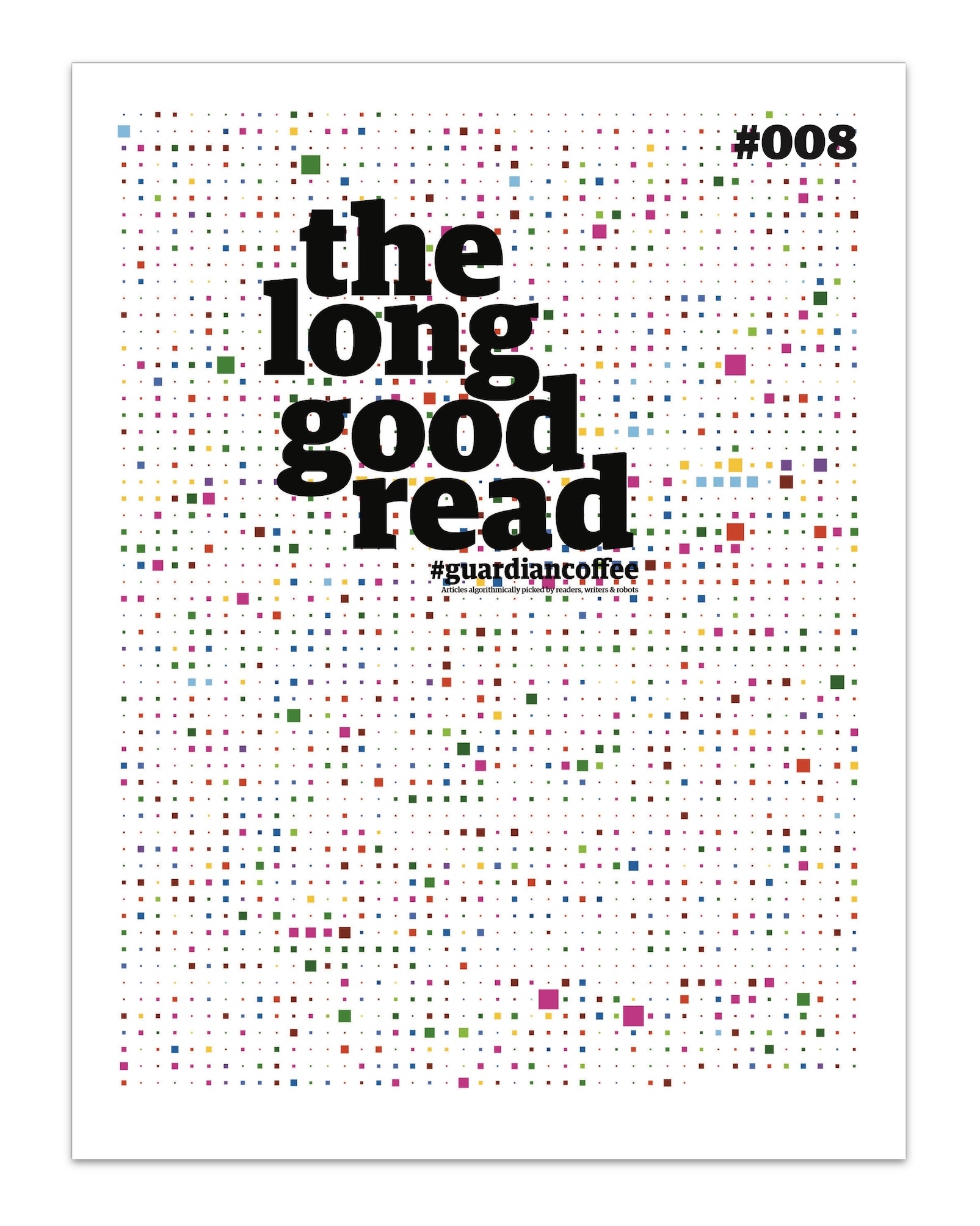

Here’s an example of the 2013 Long Good Read in PDF form. From Jemima Kiss’ introduction:
Welcome to the Long Good Read. This is an experimental, almost entirely automated newspaper that uses an algorithm to pick the week’s best long-form journalism from the Guardian…Spend time listening to anyone in the media industry, you might think newspapers are dead. In fact it’s just pulse of the big media businesses around the newspapers that is growing weaker, with readership and advertising revenues falling and increased competition from new technology just a part of that.
But newspapers themselves are a delightful, tactile, luxurious technology in their own right…part of a wider craving for tangible, physical products to compensate for our digital dependency. Our screen lives make much of our life feel overwhelming, yet at the same time we have nothing physical to show for it. And there’s a real human pleasure in being able to make and hold something in your hands.
Editorially, we get enormous satisfaction in exploring and playing with new projects. It’s not about finding a future for paper, but a future for the stories that deserve telling. Where shall we go next?
These are rich texts about 21st-century media, worthy of a moment’s comparison.
In the 2013 version, we see a continued belief in timeliness. Guardian Long Reads are rarely tied too tightly to the news cycle; they’re about a broader sense of “now” than “this week.” But the newsprint version of 2013 was still a weekly product, and so dedicated to that pace that it leaned into an algo-driven production cycle that produced a sort of cheap-looking, béton brut product. Speed was key; as one of the project’s leaders wrote, this was “an experiment to see what’s possible at the other end of the spectrum, using new technology and techniques to produce a newspaper as quickly as a webpage.”
Compare that to the 2023 version, which rather bathes in the luxury of being time-unbound. Pages are designed to the nines, as befitting a premium brand like The Guardian; headlines and design don’t just echo the story’s original presentation. The “book” part of that “bookazine” turns it into a coffee-table object. The spot-glossed cover lines — “My lament for a lost Khartoum,” “Three abandoned kids, 40 years on” — make it clear that timeliness has been knocked down a peg. The 2023 version knows print is still a useful medium, but it’s also clear that those uses are increasingly distant from digital’s.
The 2013 iteration also features a dedication to a newspaper’s content mix. Despite being called The Long Good Read, much of those newsprint editions were filled with a mix of story lengths. This edition’s first story is a scant 962 words long; a piece asking Boy George to list his favorite albums is lovely but not what most would consider a long read. That content mix was defined by an algorithm, but it still defaulted to a very newspaper-y melange of topics and formats. The 2023 version, meanwhile, knows exactly what it is — the shortest story is 4,000 words, the longest 8,000. The content matches the format rather than inheriting an editorial strategy from another medium.
There’s also the matter of price. The 2013 edition was free — but distribution was mostly limited to The Guardian’s very own coffee shop (with the achingly 2013 name #guardiancoffee), opened that summer during a strange little boom time for newsroom-operated coffee shops. (Selling hot brown water has a business model, at least.) In that sense, it was intended as a driver of habit — a reason to return weekly, as well as something to pass the time at a coffee shop with no wifi. It was a loss leader, in effect.
Contrast that with the 2023 edition, which is priced at the level of a quite-expensive magazine or a sorta-cheap paperback book. One of the news industry’s most significant realizations over the past decade has been that people will pay for content — if the product is designed properly, marketed well, and provides actual value. Every one of the stories in The Guardian Long Read Magazine is available for free online; you’re paying $16 to have it in a different format. Or, more precisely, you’re paying $16 for what you think that format will offer you — a calm respite from digital content chaos.
The same could be said for the role of algorithms in selecting the contents of the 2013 version. Back then, a robot automatically picking stories for you could seem exciting, or at least interesting. Today, it’s the reality we’re all trying to escape, “the algorithm” now a boogieman for half of society’s ills. The new edition is very much a human-edited product.
The Guardian’s coffee shop didn’t last — though frankly I’m impressed it survived three years, which is longer than the newsprint Long Good Read did. The Guardian was going through a particularly rough patch in the mid-2010s, laying off hundreds and trying to figure out how its open editorial model would fit in an increasingly paywalled world. The happy news is that they did figure it out, breaking into profit in 2019 and continuing to grow internationally today.That doesn’t mean there won’t be more troubles in the future — there most certainly will — but The Guardian is operating from a position of confidence in 2023, one it couldn’t a decade ago. I can’t say whether or not this new bookazine3 will sell. (Who goes to newsstands in 2023, anyway?) But this iteration seems like the product of a company pointed in the right direction.